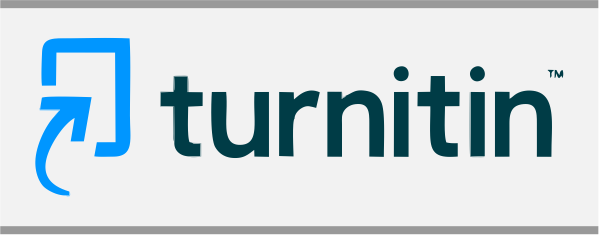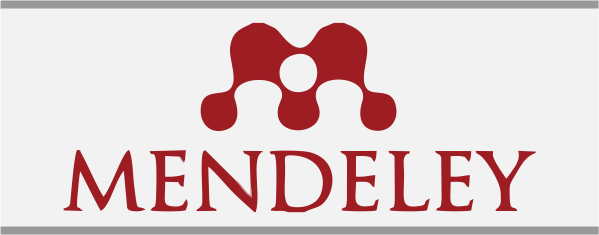AUTHENTIC MATERIALS: TEACHERS’ PERCEPTIONS AND WHY THEY MATTER
(1) IAIN Syekh Nurjati Cirebon
(*) Corresponding Author
Abstract
Abstract: The goal of learning English language in a class is to demonstrate the use of the language in real life application. Hence, the teaching and learning process must reflect, in such away, fits the reality. This calls for the use of real materials or authentic materials (AM) in the teaching and learning process. Though the positive result has been yielded by many researchers, the implementation of AM in teaching and learning English is not implemented fully in EFL setting. This research is conducted to investigate how teachers’ perception toward the use of authentic material in teaching and learning process. In depth - interview toward eight EFL school teachers, observation and documentation toward 4 English teachers are done to get the necessary data. In addition, focused group discussion (FGD) is done to triangulate the data. The finding showed that teachers perceived the important use of AM. Yet, they mostly fail to define what is AM and how it is implemented in the classroom. Their perception and action somehow do not match revealing a conclusion that they don’t’ fully understand what is AM; moreover the misconception of why it should be implemented matter the most.
Â
Keywords: Authentic Materials (AM), EFL School teachers, teachers’ perception
Full Text:
PDFReferences
REFERENCES
Aryati & Anggaira. (2016). The Use Of Authentic Materials in Improving Students’ Reading Interest. JELE, VOL. 3, NO. 1. http://id.portalgaruda.org.
Creswell, W John. (2012). Educational Research: Planning, Conducting and evaluating Quantitative and Qualitative Research (4th ed). Boston USA: Pearson education, Inc.
Clark & Craswell. (2014). Understanding Research: A Consumer's Guide: Boston USA: Pearson Education, Inc.
Dörnyei, Z. (2011). Research Method in Applied Linguistics: Quantitative, Qualitative And Mixed Methodologies. New York: Oxford University Press.
Dörnyei, Z. (2003). Attitudes, Orientations, and Motivations In Language Learning: Advances in Theory, Research And Applications. Language Learning, Vol 53 (1), 3-32.
Drijvers, P. (2012). Analysing Qualitative Data with ATLAS.Ti. Modul Presentation in Freudenthal Institute: (pp. 1-37). The Netherlands: Utrecht University.
Firmansyah. (2015 ). Students’ Perception on the Use of Authentic Materials in Senior High School. bahasa & sastra, Vol.15, No.1 http://id.portalgaruda.org.
Genhard, J., G. (1996). Teaching English as a Foreign Language: A Teacher Self-Development and Methodology. Ann Arbor: University of Michigan Press.
Guariento, W., & Morley, J. (2001). Text and Task Authenticity in the EFL Classroom. E Journal, 55(4), 347-353
Hapsari & Ratri. (2014). Extensive Listening: Let Students Experience Learning
by Optimizing the Use Of Authentic Materials. Bahasa & Sastra , Vol. 14, No.2. http://id.portalgaruda.org.
Harmer.J. (2004) How to Teach Writing. Essex: Pearson Education Limited (Longman).
Hyland, K. (2003). Second Language Writing. Cambridge: Cambridge University Press.
http://dx.doi.org/10.1017/CBO9780511667251.
Krashen, S., & Terrell, T. (1983). The Natural Approach: Language Acquisition in the
Classroom. Oxford: Pergamon Press.
Khaniya. (2006). Use of Authentic Materials in EFL Classroom. Journal of NELTA. Vol 11. No 1-2 2016. 17-23.
Klickaya (2004). Authentic Material and Cultural Content in EFL Classroom.The Internet ELT Journal, 10(7). Available at: http://iteslj.org/Techniques/Kilickaya-Autentic Material.htm.
Mardaningsih, Raja & Sukirlan (2015). Authentic and Simplified Materials On Students’
Writing Ability Of Recount Text. U-JET Vol 4, No 3: U-JET
Moleong, L.J. (2000). Metode Penelitian Kualitatif. Bandung: PT. Remaja Rosdakarya.
Morley, J. (2001). Aural Comprehension Instruction: Principles and practices. In Celce- Murcia, M. (Eds.) Teaching English as a Second Language (pp. 69-85). Boston: Heinle & Heinle.
Nunan, D. (1989). Designing Tasks for the Communicative Classroom. Cambridge: Cambridge University Press.
Octasary & Hastini (2014). Improving the Ability of Students in Listening Comprehension
by Using Authentic Materials of the Eleventh Grade Students. e-Journal of English Language Teaching Society (ELTS) Vol. 2 No. 2 201 4 – ISSN 2331 -1841
Otte, J. (2006). Real Language to Real People: A Descriptive and Exploratory Case Study of The Outcomes of Aural Authentic Texts on The Listening Comprehension of Adult Esl Students Enrolled In an Advanced Esl Listening Course. Dissertation Abstracts International, 218B. (UMI No. 3212979).
Peacock, M. (1997). The Effect of Authentic Materials on the Motivation of EFL Learners. ELT Journal, 51(2), 144-156.
Richard, J.C. (2001). Curriculum Development in Language Teaching. Cambridge: Cambridge University Press.
Rossman & Rallis. (2003). Learning in The Field: An Introduction to Qualitative Research. Thousand Oaks, Calif. : SAGE.
Shrum, J. & Glisan, E. (2010). Teacher's Handbook: Contextualized Language Instruction. (4th ed) America: Heinle & Heinle.
Sutopo, H.B. (2002). Metodologi Penelitian Kualitatif: Dasar Teori dan Terapannya dalam Penelitian. Surakarta: Sebelas Maret University Press.
Thanajaro, M. (2000). Using Authentic Materials to Develop Listening Comprehension in the English as a Foreign Language Classroom. Unpublished Doctoral dissertation, Virginia Polytechnic Institute and State University, Blacksburg, Virginia.
https://www.internetworldstats.com/stats7.htm (2017). Internet World Users by Language. Retrieved on May 25 2017.
DOI: 10.24235/eltecho.v2i1.1591
Article Metrics
Abstract view : 1035 timesPDF - 173 times
Refbacks
- There are currently no refbacks.
Â
This Journal is indexed by:
Â

This work is licensed under a Creative Commons Attribution 4.0 International License.










